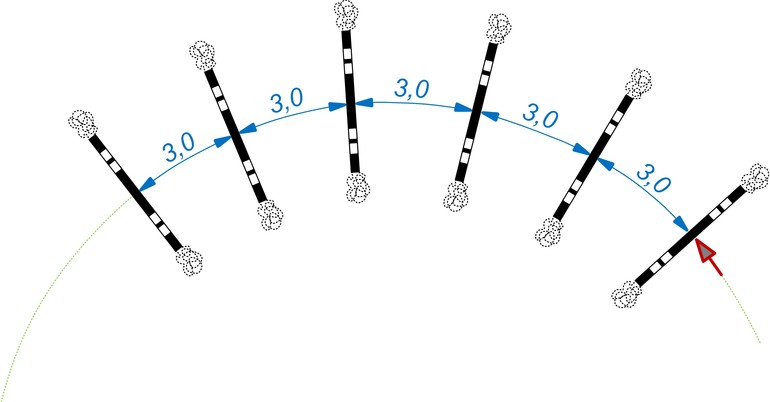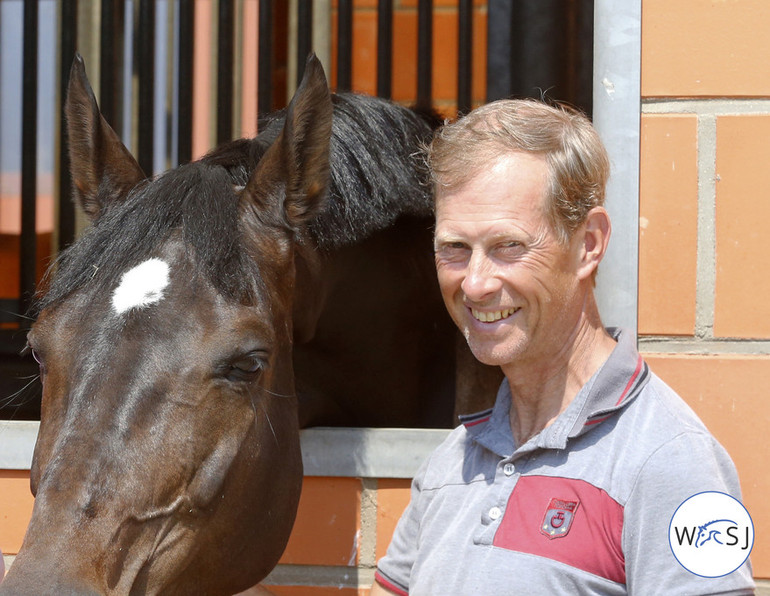Text © World of Showjumping
European Champion and Olympic Vice-Champion Rolf-Göran Bengtsson shares three gymnastic exercises that he has been using at home to keep his horses concentrated and fit during the Covid-19 pandemic.
”Once in a while, I like doing gymnastic exercises with our horses,” Rolf says. “But you need to be careful not to overdo it. These kind of exercises take more power out of the horses than you might think. You can very quickly get a high number of jumps, and you need to be aware of that. For example, if you do one of the following exercises five times, your horse has already done 30 jumps. Make sure not to push your horse too much, so that they can learn and don’t get too tired.”
“You always have to put the height on a suitable level depending on the horse’s age and educational status,” Rolf explains. “And make sure to have a nice starting level for the older, more experienced horses too – let them jump through the exercise before you start making it bigger.”
In-and-outs on a bended line
 Illustration © Peter Lundström/[email protected].
Illustration © Peter Lundström/[email protected].
We start off with six in-and-outs on a bended line with 3 meters in between each jump.
“If you have an inexperienced horse, you can start with poles on the ground. You can also do this exercise with both cross rails or verticals. With cross rails you can’t make the jumps too high, but it can help you to get the horse in the middle of every fence. I personally prefer verticals,” Rolf says.
“The purpose of the exercise is to keep your bended line and jump all the fences over the middle,” Rolf continues. “You need to get to the first fence in a canter with a decent activity but not too fast. Here you will very quickly notice if you use your outside rein or not – if not, the horse will fall to the inner side. Do the exercise both from the left and the right rein. It is important that you are not overworking the weaker side.”
“For the horse this is an exercise to build up strength, work on technique and on the rideability,” Rolf tells. “But this is also a great exercise for the rider, you will notice if you are too slow or if you are too much in front of the horse’s neck. The exercise will help practice your own balance and feeling. And both you and your horse will practice on concentration.”
Three in-and-outs – one stride – three in-and-outs
 Illustration © Peter Lundström/[email protected].
Illustration © Peter Lundström/[email protected].
The next exercise consists of three in-and-outs, followed by one stride and then by three more in-and-outs. Here we have 3m between the first in-and-outs, then 6,30m and 3,20m between the last in-and-outs.
“You and your horse need to know the first gymnastic exercise before you try this,” Rolf explains. “This is the next level, because one fence is ‘missing’ in the middle of the exercise. The horse does the first three jumps and when they see a fence is missing they can take off and the last three in-outs will be really short. You can also put a pole in the middle of the ‘gap’ to make it easier.”
“In this exercise you need the horse to go on a straight line, to keep the concentration and the balance. It is also good for practicing an even rhythm throughout the line. To be able to do that the horses need to be strong enough. Therefore, this is not an exercise for the young horses, they need to be a bit older and experienced. It’s also important to have the three last in-outs on a bit longer distance, since all horses automatically will go a bit forward in the gap.”
Oxer gymnastics
 Illustration © Peter Lundström/[email protected].
Illustration © Peter Lundström/[email protected].
The last exercise is a gymnastics consisting of five oxers, with 6,50-6,80m in between.
“This is an exercise for strength and technic,” Rolf explains. “The horses learn how to stay on the hind legs, and to keep themselves collected to jump one oxer after the other. It is also good for the concentration. When they know how to do it and can keep an even rhythm, it will get easy.”
“Here we start with the shorter distances in the beginning of the exercise and then make the distances a bit longer for every fence,” Rolf tells. “If we would have the same distance all the way, the first distances would be a bit too long and the last ones too short.”
“If you have a lazy horse you have to help and motivate a bit. If you on the other hand have a horse with a lot of energy you will have to use your upper body to slow it down,” Rolf explains.
“To help the horse find the rhythm, you can put a pole between the jumps in the middle of each distance – but think about what you put on the ground!” Rolf says. “We use soft poles or thin planks. It is dangerous to have hard and round poles on the ground after the fences as the horses can step on them and get injured.”
No reproduction without permission, copyright © World of Showjumping









